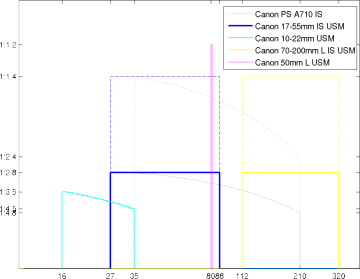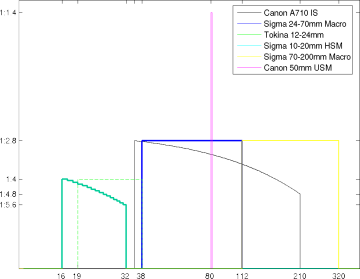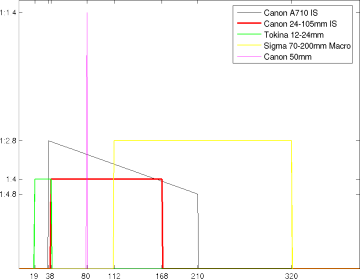Tuesday, October 2. 2007
Status September 2007

I broke the sound barrier of 70 pages yesterday. I wrote some rather mathematical pages about that tensor products of frames for Hilbert spaces are frames for the (tensor) product space, and that the frame coefficients of a 2D product frame can be computed by applying the individual frame matrices to the left and right of an image. Next, I want to show Gabor thresholding for a separable 2D window on a fully separable 4D lattice. I should also mention that computational speed can be increased when using the STFT code.
The next section will look at separable windows on partially non-separable 4D lattices that are still given as a product Λ=Λ1×Λ2. Not much will change here, I can show how a dual looks like and do again some thresholding. I want to start with that two days from now.
Then I’ll come to non-separable windows and show how this case can be reduced to the 1D case if the lattice is fully separable and width and height of the image are relatively prime. I’ll again show a dual and some thresholding. This should be done over the weekend.
Then there will be non-separable windows on partially and truly non-separable lattices. I’ll just use Prinz’ code to show a dual and demonstrate thresholding. I don’t know whether I will show computations on a truly non-separable lattice. Maybe I’ll just mention the idea of image segmentation or down-/upsampling.
So, maybe I can start doing a roundup at
Friday, September 21. 2007
Ultimate lens considerations, IV
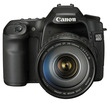
I noticed that a 24-70mm lens definitely cannot be a standard walkaround lens for a 1.6× crop camera, as the equivalent 38mm are definitely not wide angle. I’d have to switch to the dedicated wide angle lens too often. Sure, my PowerShot also starts at only 35mm, but most compact cameras simply lack wide angle focal lengths. Therefore I was thinking about a lens that starts at 17mm or 18mm, what equals 27-28mm on a crop camera. There were several candidates, and I was struggling a lot, as each had its advantages and disadvantages. One promising candidate was the Canon EF 17-40mm f/4 L USM, but although it is a Luxury (L) lens and has an ultrasonic motor, it is rather slow and has no Image Stabilizer, what actually makes it a worse choice compared to the 24-105mm f/4 L IS USM that I was considering earlier. Competing lenses from other manufactures are faster and cheaper, but they lack an ultrasonic motor and are calculated for the APS-C circle only. In addition, the upper limit of 40mm would have made a dedicated 50mm lens almost inevitable.
 I finally broke it down to the Canon EF-S 17-55mm f/2.8 IS USM [Review] that I already had in mind earlier. It is definitely the best choice for a crop camera today. It is fast and has an Image Stabilizer, making it a perfect lens for portraits or available light photography. In addition, it has an ultrasonic motor. It could almost be considered as an L-series lens, but it isn’t, as it’s also just calculated for APS-C sensors. All in all it’s rather expensive at €1099, but I’ll definitely make use of it.
I finally broke it down to the Canon EF-S 17-55mm f/2.8 IS USM [Review] that I already had in mind earlier. It is definitely the best choice for a crop camera today. It is fast and has an Image Stabilizer, making it a perfect lens for portraits or available light photography. In addition, it has an ultrasonic motor. It could almost be considered as an L-series lens, but it isn’t, as it’s also just calculated for APS-C sensors. All in all it’s rather expensive at €1099, but I’ll definitely make use of it.
 And while I’m considering a Canon lens as primary lens, I now keep an eye on the Canon EF-S 10-22mm f/3.5-4.5 USM [Review] lens. I just prefer it to the Sigma because it’s a Canon, is a little faster and has a little wider focal length range. It has a bit more of a plastic feeling than the Sigma, but the minor weight is no disadvantage. It’s at €759 at my preferred dealer, and I’ll buy it sometime at the beginning of 2008 together with a tripod.
And while I’m considering a Canon lens as primary lens, I now keep an eye on the Canon EF-S 10-22mm f/3.5-4.5 USM [Review] lens. I just prefer it to the Sigma because it’s a Canon, is a little faster and has a little wider focal length range. It has a bit more of a plastic feeling than the Sigma, but the minor weight is no disadvantage. It’s at €759 at my preferred dealer, and I’ll buy it sometime at the beginning of 2008 together with a tripod.
![]() The tele lens, the tele lens. Sure, the Sigma would be a great choice, but why not taking a fast lens that additionally provides image stabilization? The Canon EF 70-200mm f/2.8 L IS USM [Review] is usable without a tripod and has some reserves for being used together with a teleconverter. Sure, it’s really expensive with €1999, that’s why I won’t buy it too soon, maybe in about one year.
The tele lens, the tele lens. Sure, the Sigma would be a great choice, but why not taking a fast lens that additionally provides image stabilization? The Canon EF 70-200mm f/2.8 L IS USM [Review] is usable without a tripod and has some reserves for being used together with a teleconverter. Sure, it’s really expensive with €1999, that’s why I won’t buy it too soon, maybe in about one year.
 I still want to have a dedicated fast portrait lens like the 50mm f/1.4 by Canon. But I also consider the great Canon EF 50mm f/1.2 L USM [Review]. It is very fast, provides a very narrow depth of field, and is rather expensive at €1369, but it’s really that good. We’ll see what my preferences will be. A flash might be more important for the first time.
I still want to have a dedicated fast portrait lens like the 50mm f/1.4 by Canon. But I also consider the great Canon EF 50mm f/1.2 L USM [Review]. It is very fast, provides a very narrow depth of field, and is rather expensive at €1369, but it’s really that good. We’ll see what my preferences will be. A flash might be more important for the first time.
The main reason for considering the f-stop of 1.2 or the IS for the other lenses is that my PowerShot also has an IS, what actually decreases the aperture values as if the lenses were faster. The following plot of focal length and aperture coverage of the desired lenses considers this by indicated dashed lines:
Wednesday, September 19. 2007
Starting with the last chapter

I finished
- Separable atom, fully separable 4D PF-lattice (into 1D subgroups)
- Separable atom, partially non-separable PF-lattice (i.e., product of non-separable 2D lattices)
- Non-separable atom, fully separable 4D PF-lattice
- Non-separable atom on general 4D PF-lattices (only mentioned shortly)
I expect to write at least 20 pages for that chapter, they might become 30, and so I should have finished everything by the mid of October, where I want to go on a 2-week holiday while HGFei reads through my thesis. After that I just want to do cosmetic changes (minor corrections, appendix, preface) and have it printed by the beginning of November. About one month later I want to take the Master exam.
HGFei currently wants me to deal with the topic of down-/upsampling, but I’m not sure yet to what extent I’ll follow that.
Sunday, September 9. 2007
Storage capacity consideration, II

I finally had to buy a 160GB notebook disk and already transferred all data from the old 60GB disk to the new one by using an IDE-to-USB converter. After having transferred the remaining data from my aging backup PC, I’ll have 52GB free space.
As that backup host dates back to 2001, has various quirks (Gentoo Linux, /usr on LVM on RAID-5 ![]() ) and isn’t really reliable anymore for data backup (the array sometimes dissolves), I’ll have to change some things, but won’t buy new hardware. I’ll replace Gentoo with Debian and arrange the three 80GB disks as a linear NRAID array. The system will take 5GB on RAID-1 over three disks, and the remaining three 75GB partitions become a linear 225GB device. This means that if one disk fails, only the data on that disk is lost. But that doesn’t matter, as I still have the things on my notebook anyway. Various personal and multimedia files will be backed up on DVD unregularly, and my photos are already getting backed up to CDs and stored out of house.
) and isn’t really reliable anymore for data backup (the array sometimes dissolves), I’ll have to change some things, but won’t buy new hardware. I’ll replace Gentoo with Debian and arrange the three 80GB disks as a linear NRAID array. The system will take 5GB on RAID-1 over three disks, and the remaining three 75GB partitions become a linear 225GB device. This means that if one disk fails, only the data on that disk is lost. But that doesn’t matter, as I still have the things on my notebook anyway. Various personal and multimedia files will be backed up on DVD unregularly, and my photos are already getting backed up to CDs and stored out of house.
I elaborated the following strategy, mainly leering towards collecting a huge number of photos with my future DSLR camera:
- Short-term storage: Notebook. Here I’ll keep the most recent pictures only, for digital manipulation or simply for quick access.
- Mid-term storage: Backup host (without RAID), DVDs or plain external USB harddisks. Everything that’s on my notebook is also on that disks. But the disks will contain all pictures ever made. If a disk breaks, I’ll either have the data on the notebook or on the DVDs anyway. Only photos undergo the long-term storage.
- Long-term storage of photos: CDs. Only CDs are designed for long-term storage, DVDs aren’t. And to be safe from environmental influences, they are transferred to a house 160km away from here. Sure, CDs only take 700MB, but they’re cheap; for duplicating a possible 500GB disk full of photos, I’ll need 732 CDs. Gee! Maybe I should nevertheless take DVD±Rs for that, where I’ll only need 125 pieces. But they might not be readable anymore in a few years.
The reason for considering an external 500GB disk is that portable data tanks for photographers nowadays have a capacity of 40-80GB. I’ll reuse my 60GB notebook disk by placing it into a corresponding device. If I really manage to fill it on a holiday (>3000 RAWs?? Well, 210 RAWs per day on an exciting 2-week holiday possible, why not?), this already takes 88 CDs for long-term storage. That takes a lot of time to burn, and a lot of room to store. We’ll see how my photo rate of yield really changes.
Addendum: It seems that DVD-RAM is the appropriate media, as it lasts for 30 years according to Wikipedia, whereas CDs only last for a few years. I’d need 15 DVD-RAMs for a filled 60GB data tank, what is a more reasonable number.
Thursday, September 6. 2007
Ultimate lens considerations, III

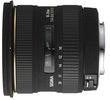 I found yet another wide angle lens that could be of interest: The Sigma 10-20mm f/4-5.6 EX DC HSM [Review]. Although it delivered no overwhelming values in both DigitalPHOTO 05/2007 and ColorFoto 08/2007 due to its vignetting problems in the mid range (though it got a recommendation for the D200 in the same issue), it beat the Tokina 12-24mm f/4 in both the 04/2007 issue of the UK Photography Monthly magazine and the 05/2007 issue of the UK Digital Photo magazine. I found a private tester comparing both lenses to each other and to the Canon EF-S 10-22mm f/3.5-4.5 USM. The main reason why this lens becomes interesting to me is that is reaches a wider angle of 10mm (@16mm) instead of just 12mm (@19mm), what is significant in the wide angle range and provides a noticable wider FOV. Another advantage is that it has an ultrasonic autofocus. A disadvantage is the drop in aperture, but for landscape photography lower f-stops of at least f/8 or f/11 are usual anyway. This already reduces the vignetting, and the effects of vignetting, CA and even optical distortion can be corrected by software anyway; actually, good shots want to be optimized digitally. The lens is at €499 at my dealer.
I found yet another wide angle lens that could be of interest: The Sigma 10-20mm f/4-5.6 EX DC HSM [Review]. Although it delivered no overwhelming values in both DigitalPHOTO 05/2007 and ColorFoto 08/2007 due to its vignetting problems in the mid range (though it got a recommendation for the D200 in the same issue), it beat the Tokina 12-24mm f/4 in both the 04/2007 issue of the UK Photography Monthly magazine and the 05/2007 issue of the UK Digital Photo magazine. I found a private tester comparing both lenses to each other and to the Canon EF-S 10-22mm f/3.5-4.5 USM. The main reason why this lens becomes interesting to me is that is reaches a wider angle of 10mm (@16mm) instead of just 12mm (@19mm), what is significant in the wide angle range and provides a noticable wider FOV. Another advantage is that it has an ultrasonic autofocus. A disadvantage is the drop in aperture, but for landscape photography lower f-stops of at least f/8 or f/11 are usual anyway. This already reduces the vignetting, and the effects of vignetting, CA and even optical distortion can be corrected by software anyway; actually, good shots want to be optimized digitally. The lens is at €499 at my dealer.
Btw, that private tester also compares the 24-70mm f/2.8 lenses of Canon and Sigma to each other.
I drew the following picture of focal length and aperture coverage of my desired lenses:
I chose a logarithmic scaling for the horizontal axis, as slight changes in the lower focal lengths already produce a large change in FOV, whereas focal lengths in the high range have to be doubled or even tripled to yield a higher view detail in the same amount. There’s now a gap in the range between 20 and 24mm (@32-38mm), but I don’t consider that as problem. But the big advantage is the wider FOV, what I assume to use more often than its wide end of 20mm (@32mm). Notice the difference:
| Sigma at 10mm | Tokina at 12mm |
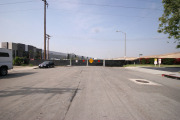 | 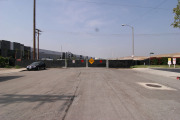 |
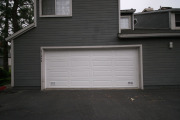 | 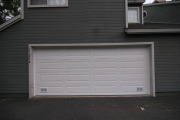 |
Monday, September 3. 2007
Ultimate lens considerations, II

I thought a little more about what my first lenses could be, and I got inspired by one photographer’s gallery on the web. He shows many pictures living from narrow depths of field and low f-stops e.g. at f/2.8. He even shows some portraits taken with a 50mm f/1.4 lens at low light or showing awesome narrow depths of field. Therefore I noticed that having a faster lens is more important than high focal lengths, and a DSLR camera body can be used for several years without leering towards FF sensors, what that photographer showed by using an EOS 20D. After some searching I found a different scenario of lenses while coming to lower prices due to the preference of Sigma to Canon. Btw, I found out that the teleconverters can only be used for tele lenses.
 Previously I was considering the Canon EF 24-105mm f/4L IS USM [Review] as first lens. Compared to the miniature film equivalence of my PowerShot, what is @35-210mm with f/2.8-4.8, that lens covers @38-168mm and almost reaches the upper limit of @210mm. However, it only has an aperture of f/4. Sure, the IS allows longer exposures, but low f-stops and therefore very narrow depths of field aren’t possible. In addition, it’s rather expensive with €999. Luckily I found an interesting alternative, what I will mention below.
Previously I was considering the Canon EF 24-105mm f/4L IS USM [Review] as first lens. Compared to the miniature film equivalence of my PowerShot, what is @35-210mm with f/2.8-4.8, that lens covers @38-168mm and almost reaches the upper limit of @210mm. However, it only has an aperture of f/4. Sure, the IS allows longer exposures, but low f-stops and therefore very narrow depths of field aren’t possible. In addition, it’s rather expensive with €999. Luckily I found an interesting alternative, what I will mention below.
 The Tokina 12-24mm f/4 AT-X PRO DX [Review] has no ultrasonic autofocus motor, but it’s simply a good wide angle lens, and a constant value of f/4 is not so self-evident. The low @19mm are really useable. This will be my second lens for sure, and its upper focal length of @38mm should perfectly end at the beginning of the next higher lens. The €549 are quite a bit much at my preferred dealer, I could get it for €485 where I intend to buy the batteries, but I’ll often use the wide angle range, justifying the purchase.
The Tokina 12-24mm f/4 AT-X PRO DX [Review] has no ultrasonic autofocus motor, but it’s simply a good wide angle lens, and a constant value of f/4 is not so self-evident. The low @19mm are really useable. This will be my second lens for sure, and its upper focal length of @38mm should perfectly end at the beginning of the next higher lens. The €549 are quite a bit much at my preferred dealer, I could get it for €485 where I intend to buy the batteries, but I’ll often use the wide angle range, justifying the purchase.
 I finally found a very reasonable tele lens: The Sigma 70-200mm f/2.8 EX DG APO HSM IF Macro [Review] costs only half as much as the equivalent model by Canon, namely €979, what is very reasonable. Sure, it doesn’t have Sigma’s Optical Stabilizer, but a constant f/2.8 is very high, and it even has a macro function (though only with a magnification of 1:3.5). Unfortunately, it got no recommendation in ColorFoto 09/2007 for use on the EOS 20D, but just because the expensive Canon lens provided better values. But it did get a recommendation for the Nikon D200, and other users say that it can compete with the Canon. With that lens I can do good portraits at the lower @112mm at f/2.8, and still have f/2.8 at the upper @320mm, what is quite high. And did I mention it has a macro function?
I finally found a very reasonable tele lens: The Sigma 70-200mm f/2.8 EX DG APO HSM IF Macro [Review] costs only half as much as the equivalent model by Canon, namely €979, what is very reasonable. Sure, it doesn’t have Sigma’s Optical Stabilizer, but a constant f/2.8 is very high, and it even has a macro function (though only with a magnification of 1:3.5). Unfortunately, it got no recommendation in ColorFoto 09/2007 for use on the EOS 20D, but just because the expensive Canon lens provided better values. But it did get a recommendation for the Nikon D200, and other users say that it can compete with the Canon. With that lens I can do good portraits at the lower @112mm at f/2.8, and still have f/2.8 at the upper @320mm, what is quite high. And did I mention it has a macro function?
 And because I was so inspired by pictures using low f-stops, I consider the Canon EF 50mm f/1.4 USM [Review] as a possible future lens for high quality portraits. This will enable good pictures at low light, and good portraits with incredible narrow depth of field. And all this for only €369, what is really not the price range of fast zoom lenses.
And because I was so inspired by pictures using low f-stops, I consider the Canon EF 50mm f/1.4 USM [Review] as a possible future lens for high quality portraits. This will enable good pictures at low light, and good portraits with incredible narrow depth of field. And all this for only €369, what is really not the price range of fast zoom lenses.
Now I could draw the following picture of focal length coverage and aperture values of the mentioned lenses (on an APS-C sensor with crop 1.6):
Continue reading "Ultimate lens considerations, II"
Saturday, September 1. 2007
Status August 2007

I managed to finish
Wednesday, August 29. 2007
Ultimate lens considerations

It appears to be very difficult to decide what lens could be optimal for one’s needs. There’s so much to choose from, so many different parameters and prices, but the price is not always a good indication for quality. You really have to search for lens tests, because the lens parameters alone only provide some basic data.
As I secretly wished that the Canon EOS 40D would already get an FF sensor, I planned to take the Canon EF 24-105mm f/4.0 L IS USM lens, what Sobotka lists at a price of €999. The lens got a recommendation in the 09/2006 issue of the German DigitalPHOTO magazine. As telephoto lens I wanted to take the Canon EF 100-400mm f/4.5-5.6 L IS USM at a later time, and Sobotka lists it at handsome €1,649. That should have been enough for some time, as I plan to do landscape photography primarily, and 24mm is already a reasonable wide angle focal length. Whereas DSLR camera bodies might get renewed after some years, the lenses are usually intended to be kept for some generations. Therefore I’d rather buy good lenses in the first time and keep it for several years, and so I’d intend to keep them usable for a possible future FF sensor.
However, as the EOS 40D now has an APS-C sized sensor with a crop factor of 1.6, this means that the 24-105mm lens would correspond to a 38-168mm, and this is not in the wide angle range anymore. If I really want to insist on it, then I’d need a separate dedicated wide angle lens to cover the region between 24 and 38mm, what corresponds to a real focal length between 15 and 24mm. The Canon EF 16-35mm f/2.8 L USM could do this at a high cost, corresponding to a 25-56mm on APS-C. But the 10/2006 issue of the German ColorFoto magazine gives no recommendation for using it on FF sensors. Maybe the 2nd edition of that lens is better, but it’s even more expensive (€1,649). Sigma’s 12-24mm f/4.5-5.6 EX DG HSM could be used on FF sensors (ColorFoto 08/2007), and on an APS-C sized sensor it’s a 19-38mm, but it doesn’t allow filters, and polar filters are essential tools for landscape photography. Anyway, that lens got a bad rating in ColorFoto 08/2007 for use on APS-C, but others say it’s quite useable there (DigitalPHOTO 05/2007). The Canon EF-S 10-22mm f/3.5-4.5 USM seems to be a little better choice, although ColorFoto 08/2007 doesn’t give a recommendation either. It corresponds to a 16-35mm and would even outrange the 24mm of the mentioned lens on FF sensors, but it also costs €759 and I don’t really want to buy two lenses at once, as everything becomes too expensive and impractical.
Continue reading "Ultimate lens considerations"
About
Calendar
| Mon | Tue | Wed | Thu | Fri | Sat | Sun |
|---|---|---|---|---|---|---|
| ← Back | December '25 | Forward → | ||||
| 1 | 2 | 3 | 4 | 5 | 6 | 7 |
| 8 | 9 | 10 | 11 | 12 | 13 | 14 |
| 15 | 16 | 17 | 18 | 19 | 20 | 21 |
| 22 | 23 | 24 | 25 | 26 | 27 | 28 |
| 29 | 30 | 31 | ||||
